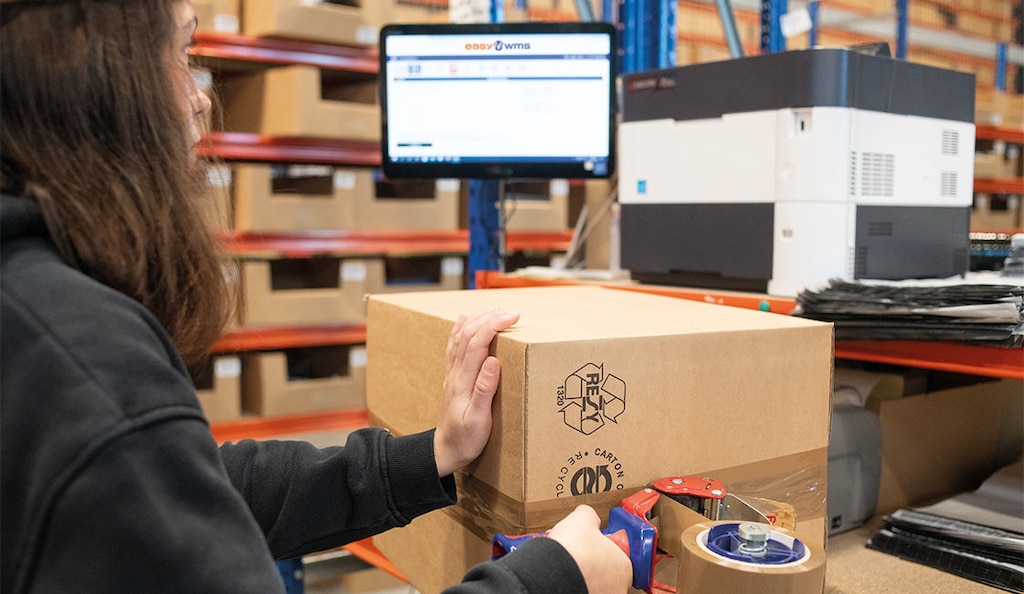
Omnichannel strategy: definition and how to implement it
More and more businesses are employing omnichannel strategies in their communication with customers and the logistics services they provide. Consumers will typically consult the website profile of a product or service before deciding to make an in-store purchase or to pick up their merchandise at a designated delivery point.
The impact of omnichannel is evident in warehousing, with heightened order fulfillment for customers from different channels. A study by Wunderman Thompson finds that 23% of online purchases end up being returned, making it crucial to provide multiple return options to enhance overall satisfaction.
What is the omnichannel strategy?
An omnichannel strategy consists of creating a seamless shopping and product/service delivery experience through the use of different sales and communication channels. The priority of any company is to make the process as convenient as possible for customers so that they’ll return in the future. When it comes to logistics, the key is to streamline inbound and outbound flows of goods across the different supply chain links.
The communication aspect of the omnichannel strategy can be implemented through conventional means such as email or phone. Alternatively, it can be more innovative with tools like chatbots, forums, or other artificial intelligence-based platforms. According to Zendesk, 70% of consumers buy more from businesses that maintain fluid conversations.

Omnichannel goes a step beyond a multichannel strategy. A company with physical stores, a social media presence, a call center, and a chatbot is multichannel: it has various ways of communicating with users. However, without information sharing across all departments, it can’t be considered a true omnichannel strategy.
The omnichannel model transcends logistics and communication barriers, ensuring that all channels open to the public are integrated. The goal of omnichannel is to eliminate the need for a person to explain their case to multiple employees, for instance. Additionally, it allows customers to pick up and return orders at different points in the delivery chain, reducing travel costs for businesses.
Examples of omnichannel strategy
Numerous organizations have already integrated the omnichannel strategy into their operations:
Decathlon
One of the most notable examples is sports equipment giant Decathlon. The company caters to both seasoned athletes and novices alike through a website that makes it easy to gear up for any activity. Users can locate the nearest brick-and-mortar store, shop online, download an app, receive home deliveries, or pick their products up at a physical point in less than two hours. If they have any questions, customer service includes conventional response options and a chat feature.
To handle such a high volume of orders from various channels, the retailer expedited order fulfillment and expanded its warehouses in Brazil, Italy, the UK, and Poland. By partnering with Mecalux, Decathlon has managed to shorten delivery times, satisfy its online customers, and boost its expansion. Some of the solutions installed include pallet racks, picking shelves, and mezzanines.
Rouje
In France, fashion brand Rouje incorporated the omnichannel strategy in its business to provide better service to customers and broaden its global reach. In high season, the company’s Paris warehouse distributes up to 900 orders to its online customers, physical stores, and stores-within-stores.
The French retailer turned to digitalization to ramp up picking productivity. With instructions from the Easy WMS warehouse management system, a large portion of orders are fulfilled by cross-docking. Thus, goods that arrive at the facility are distributed directly without having to be stored first.
Omnichannel logistics flows
To apply an omnichannel strategy, companies with several warehouses or stores require logistics-specific software to organize their operations, control inventory, and determine the best goods shipping location. These programs orchestrate fulfillment and the distribution of goods to transportation agencies for final delivery. Increased flexibility in online sales has led to new logistics flows.
- Warehouse-to-home shipping. This is the most common flow: a carrier transports goods from a logistics center to the buyer’s residence (or office). Personalizing last-mile delivery can make this process more complex.
- BOPIS. Buy online, pick up in-store (BOPIS) is a typical omnichannel flow whereby customers retrieve their purchases at a pick-up point.
- Store-to-home shipping. In this scenario, the store acts as a warehouse and dispatches orders.
- BORIS. In addition to picking up their purchases in retail establishments, customers can employ the buy online, return in-store (BORIS) process, which generates new sales opportunities.

How to implement an omnichannel strategy
To employ a successful omnichannel strategy, you need to know your business inside out.
- Involve multiple departments. It’s essential to incorporate various company teams in the strategy to provide a coordinated response to end-users without information leaks.
- Identify your target audience. Understanding the behavior of end customers makes it easier to establish omnichannel strategies effectively. For instance, if your core audience is athletes, it might be beneficial to deliver orders to pick-up points near gyms as well as homes.
- Establish channels. After studying your current and potential consumers, choose logistics and communication tools to meet their demands.
- Monitor the omnichannel strategy. Setting up omnichannel without prior organization or planning can lead to supply chain issues. The strategy can give you a competitive edge, but improper data transfer can increase error margins.
Coordinated omnichannel logistics
Omnichannel logistics calls for the seamless coordination of all supply chain elements and processes. Warehouse management software is critical for comprehensive control of diverse stock. Easy WMS organizes the fulfillment of numerous orders with multiple destinations, streamlining logistics operations.
Considering optimizing workflows in your warehouse or distribution center? Be sure to contact us for expert advice on the best automation and software options for your business.
